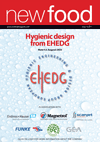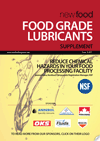Safe food and prosperity for people and the planet: What can we do now?
1 November 2011 | By Dr. Katherine Flynn, Lead Editor, People, Planet, Prosperity and the Food Chain
Huub Lelieveld and I first discussed People, Planet, Prosperity and the Food Chain when we found we were the only two vegetarians at a fixed plate dinner where the main course was chicken. Soon we were discussing the need for a 360 degree paradigm shift in the way not only…







